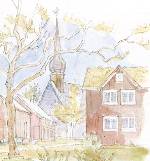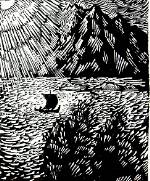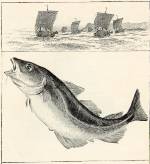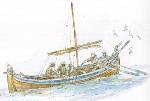

|

Alstahaug. Ill. K.E.Harr 
Ill. H.G. Sørensen 
Ill. T. Holmboe 
Fishermen. Ill. K.E.Harr |
Petter Dass
(1647 - 1707)
Petter Dass was the vicar of Alstadhaug, in Nordland, and Norway's greatest 17th-century writer.
All are greeted in his introduction:
His enthusiasm, however, is not quite the same when it comes to the weather:
The fish in the sea are praised:
And, even here at the edge of the world, nature is bountiful:
His parting is similar in fashion:
|

|
© University Library of Tromsø - 1999.
The Northern Lights Route is part of The Council of Europe Cultural Routes. The Cultural Routes are an invitation to Europeans to wander the paths and explore the places where the unity and diversity of our European identity were forged.
|

|